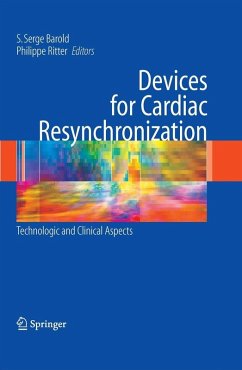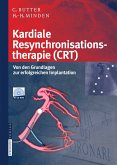The treatment of congestive heart failure by implanted biventricular pacemakers, or cardiac resynchronization, has revolutionized the practice of implanting pacemakers and defibrillators. More cardiac resynchronization therapy devices than conventional pacemakers are now being implanted and their numbers are growing worldwide. This comprehensive volume will be useful to cardiologists, cardiac electrophysiologists, cardiac surgeons, cardiology fellows in training, intensive care specialists and anyone interested in pacing, ICDs and their follow-up.
S. Serge Barold, M.D., is Clinical Professor of Medicine, University of South Florida College of Medicine and Division of Cardiology, Tampa General Hospital, Tampa, Florida, USA.
Philippe Ritter, M.D., is Chairman, Cardiostim InParys, St. Cloud, Clinique Bizet Paris, Clinique Chirurgicale Val d'Or, St Cloud, Paris, France.
Dieser Download kann aus rechtlichen Gründen nur mit Rechnungsadresse in A, B, BG, CY, CZ, D, DK, EW, E, FIN, F, GR, HR, H, IRL, I, LT, L, LR, M, NL, PL, P, R, S, SLO, SK ausgeliefert werden.









